Delta Airlines 2014 Annual Report Download - page 13
Download and view the complete annual report
Please find page 13 of the 2014 Delta Airlines annual report below. You can navigate through the pages in the report by either clicking on the pages listed below, or by using the keyword search tool below to find specific information within the annual report.-
 1
1 -
 2
2 -
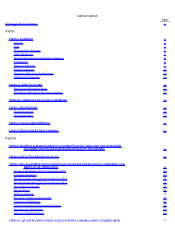 3
3 -
 4
4 -
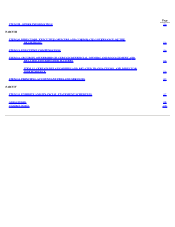 5
5 -
 6
6 -
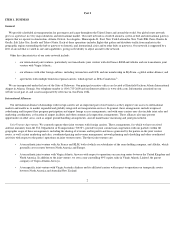 7
7 -
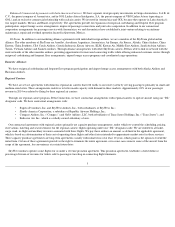 8
8 -
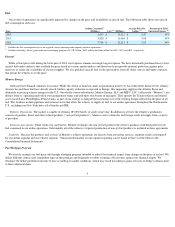 9
9 -
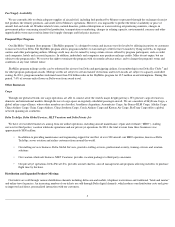 10
10 -
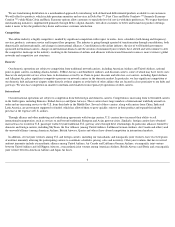 11
11 -
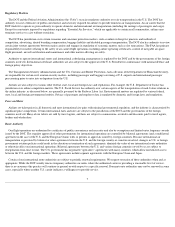 12
12 -
 13
13 -
 14
14 -
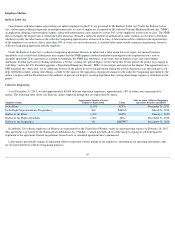 15
15 -
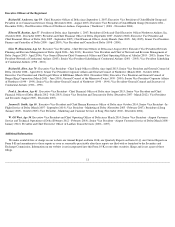 16
16 -
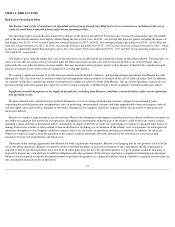 17
17 -
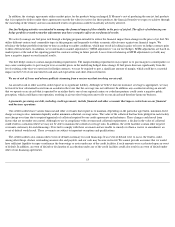 18
18 -
 19
19 -
 20
20 -
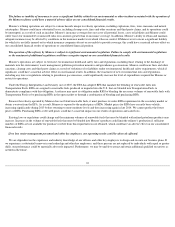 21
21 -
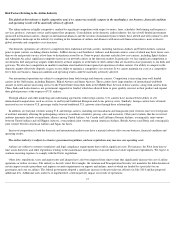 22
22 -
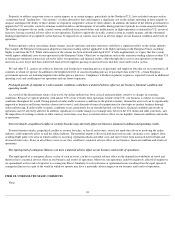 23
23 -
 24
24 -
 25
25 -
 26
26 -
 27
27 -
 28
28 -
 29
29 -
 30
30 -
 31
31 -
 32
32 -
 33
33 -
 34
34 -
 35
35 -
 36
36 -
 37
37 -
 38
38 -
 39
39 -
 40
40 -
 41
41 -
 42
42 -
 43
43 -
 44
44 -
 45
45 -
 46
46 -
 47
47 -
 48
48 -
 49
49 -
 50
50 -
 51
51 -
 52
52 -
 53
53 -
 54
54 -
 55
55 -
 56
56 -
 57
57 -
 58
58 -
 59
59 -
 60
60 -
 61
61 -
 62
62 -
 63
63 -
 64
64 -
 65
65 -
 66
66 -
 67
67 -
 68
68 -
 69
69 -
 70
70 -
 71
71 -
 72
72 -
 73
73 -
 74
74 -
 75
75 -
 76
76 -
 77
77 -
 78
78 -
 79
79 -
 80
80 -
 81
81 -
 82
82 -
 83
83 -
 84
84 -
 85
85 -
 86
86 -
 87
87 -
 88
88 -
 89
89 -
 90
90 -
 91
91 -
 92
92 -
 93
93 -
 94
94 -
 95
95 -
 96
96 -
 97
97 -
 98
98 -
 99
99 -
 100
100 -
 101
101 -
 102
102 -
 103
103 -
 104
104 -
 105
105 -
 106
106 -
 107
107 -
 108
108 -
 109
109 -
 110
110 -
 111
111 -
 112
112 -
 113
113 -
 114
114 -
 115
115 -
 116
116 -
 117
117 -
 118
118 -
 119
119 -
 120
120 -
 121
121 -
 122
122 -
 123
123 -
 124
124 -
 125
125 -
 126
126 -
 127
127 -
 128
128 -
 129
129 -
 130
130 -
 131
131 -
 132
132 -
 133
133 -
 134
134 -
 135
135 -
 136
136 -
 137
137 -
 138
138 -
 139
139 -
 140
140 -
 141
141 -
 142
142 -
 143
143 -
 144
144 -
 145
145 -
 146
146 -
 147
147 -
 148
148 -
 149
149 -
 150
150 -
 151
151 -
 152
152 -
 153
153 -
 154
154 -
 155
155 -
 156
156 -
 157
157 -
 158
158 -
 159
159 -
 160
160 -
 161
161 -
 162
162 -
 163
163 -
 164
164 -
 165
165 -
 166
166 -
 167
167 -
 168
168 -
 169
169 -
 170
170 -
 171
171 -
 172
172 -
 173
173 -
 174
174 -
 175
175 -
 176
176 -
 177
177 -
 178
178 -
 179
179 -
 180
180 -
 181
181 -
 182
182 -
 183
183 -
 184
184 -
 185
185 -
 186
186 -
 187
187 -
 188
188 -
 189
189 -
 190
190 -
 191
191 -
 192
192 -
 193
193 -
 194
194 -
 195
195 -
 196
196 -
 197
197 -
 198
198 -
 199
199 -
 200
200 -
 201
201 -
 202
202 -
 203
203 -
 204
204 -
 205
205 -
 206
206 -
 207
207 -
 208
208 -
 209
209 -
 210
210 -
 211
211 -
 212
212 -
 213
213 -
 214
214 -
 215
215 -
 216
216 -
 217
217 -
 218
218 -
 219
219 -
 220
220 -
 221
221 -
 222
222 -
 223
223 -
 224
224 -
 225
225 -
 226
226 -
 227
227 -
 228
228 -
 229
229 -
 230
230 -
 231
231 -
 232
232 -
 233
233 -
 234
234 -
 235
235 -
 236
236 -
 237
237 -
 238
238 -
 239
239 -
 240
240 -
 241
241 -
 242
242 -
 243
243 -
 244
244 -
 245
245 -
 246
246 -
 247
247 -
 248
248 -
 249
249 -
 250
250 -
 251
251 -
 252
252 -
 253
253 -
 254
254 -
 255
255 -
 256
256 -
 257
257 -
 258
258 -
 259
259 -
 260
260 -
 261
261 -
 262
262 -
 263
263 -
 264
264 -
 265
265 -
 266
266 -
 267
267 -
 268
268 -
 269
269 -
 270
270 -
 271
271 -
 272
272 -
 273
273 -
 274
274 -
 275
275 -
 276
276 -
 277
277 -
 278
278 -
 279
279 -
 280
280 -
 281
281 -
 282
282 -
 283
283 -
 284
284 -
 285
285 -
 286
286 -
 287
287 -
 288
288 -
 289
289 -
 290
290 -
 291
291 -
 292
292 -
 293
293 -
 294
294 -
 295
295 -
 296
296 -
 297
297 -
 298
298 -
 299
299 -
 300
300 -
 301
301 -
 302
302 -
 303
303 -
 304
304 -
 305
305 -
 306
306 -
 307
307 -
 308
308 -
 309
309 -
 310
310 -
 311
311 -
 312
312 -
 313
313 -
 314
314 -
 315
315 -
 316
316 -
 317
317 -
 318
318 -
 319
319 -
 320
320 -
 321
321 -
 322
322 -
 323
323 -
 324
324 -
 325
325 -
 326
326 -
 327
327 -
 328
328 -
 329
329 -
 330
330 -
 331
331 -
 332
332 -
 333
333 -
 334
334 -
 335
335 -
 336
336 -
 337
337 -
 338
338 -
 339
339 -
 340
340 -
 341
341 -
 342
342 -
 343
343 -
 344
344 -
 345
345 -
 346
346 -
 347
347 -
 348
348 -
 349
349 -
 350
350 -
 351
351 -
 352
352 -
 353
353 -
 354
354 -
 355
355 -
 356
356 -
 357
357 -
 358
358 -
 359
359 -
 360
360 -
 361
361 -
 362
362 -
 363
363 -
 364
364 -
 365
365 -
 366
366 -
 367
367 -
 368
368 -
 369
369 -
 370
370 -
 371
371 -
 372
372 -
 373
373 -
 374
374 -
 375
375 -
 376
376 -
 377
377 -
 378
378 -
 379
379 -
 380
380 -
 381
381 -
 382
382 -
 383
383 -
 384
384 -
 385
385 -
 386
386 -
 387
387 -
 388
388 -
 389
389 -
 390
390 -
 391
391 -
 392
392 -
 393
393 -
 394
394 -
 395
395 -
 396
396 -
 397
397 -
 398
398 -
 399
399 -
 400
400 -
 401
401 -
 402
402 -
 403
403 -
 404
404 -
 405
405 -
 406
406 -
 407
407 -
 408
408 -
 409
409 -
 410
410 -
 411
411 -
 412
412 -
 413
413 -
 414
414 -
 415
415 -
 416
416 -
 417
417 -
 418
418 -
 419
419 -
 420
420 -
 421
421 -
 422
422 -
 423
423 -
 424
424 -
 425
425 -
 426
426 -
 427
427 -
 428
428 -
 429
429 -
 430
430 -
 431
431 -
 432
432 -
 433
433 -
 434
434 -
 435
435 -
 436
436 -
 437
437 -
 438
438 -
 439
439 -
 440
440 -
 441
441 -
 442
442 -
 443
443 -
 444
444 -
 445
445 -
 446
446 -
 447
447 -
 448
448 -
 449
449 -
 450
450 -
 451
451 -
 452
452 -
 453
453 -
 454
454 -
 455
455 -
 456
456
 |
 |

Airport Access
Operations at four major domestic airports and certain foreign airports served by us are regulated by governmental entities through allocations of
“slots”
or similar regulatory mechanisms which limit the rights of carriers to conduct operations at those airports. Each slot represents the authorization
to land at or take off from the particular airport during a specified time period.
In the U.S., the FAA currently regulates the allocation of slots, slot exemptions, operating authorizations, or similar capacity allocation mechanisms
at Reagan National in Washington, D.C. and LaGuardia, JFK and Newark in the New York City area. Our operations at these airports generally require
the allocation of slots or analogous regulatory authorizations. Similarly, our operations at Tokyo's Narita and Haneda airports, London's Heathrow
airport and other international airports are regulated by local slot coordinators pursuant to the International Air Transport Association's Worldwide
Scheduling Guidelines and applicable local law. We currently have sufficient slots or analogous authorizations to operate our existing flights, and we
have generally been able to obtain the rights to expand our operations and to change our schedules. There is no assurance, however, that we will be
able to do so in the future because, among other reasons, such allocations are subject to changes in governmental policies.
Environmental Matters
Emissions . The U.S. Environmental Protection Agency (the “EPA”) is authorized to regulate aircraft emissions and has historically implemented
emissions control standards adopted by the International Civil Aviation Organization (“ICAO”). Our aircraft comply with existing EPA standards as
applicable by engine design date. The ICAO has adopted two additional aircraft engine emissions standards, the first of which is applicable to engines
certified after December 31, 2007, and the second of which is applicable to engines certified after December 31, 2013. In June 2012, the EPA
published a final rulemaking for new emission standards for oxides of nitrogen (NOx), adopting ICAO's additional standards. Included in the rule are
two new tiers of more stringent emission standards for NOx. These standards, referred to as the Tier 6 standards, become effective for newly-
manufactured aircraft engines beginning in 2013.
Concern about aviation environmental issues, including climate change and greenhouse gases, has led to taxes on our operations in the United
Kingdom and in Germany, both of which have levied taxes directly on our customers. We may face additional regulation of aircraft emissions in the
U.S. and abroad and become subject to further taxes, charges or additional requirements to obtain permits or purchase allowances or emission credits
for greenhouse gas emissions in various jurisdictions. This could result in taxation or permitting requirements from multiple jurisdictions for the same
operations. Ongoing bilateral discussions between the U.S. and other nations may lead to international treaties or other actions focusing on reducing
greenhouse gas emissions from aviation. In addition, at the 38
th
ICAO Assembly that concluded October 4, 2013 in Montreal, the Assembly adopted a
climate change resolution committing ICAO to develop a global market-based measure to be finalized at the 2016 ICAO Assembly which would
enable the airline industry to achieve carbon-neutral growth from 2020.
The European Union has required its member states to implement regulations including aviation in its Emissions Trading Scheme (“ETS”). Under
these regulations, any airline with flights originating or landing in the European Union is subject to the ETS and, beginning in 2012, was required to
purchase emissions allowances if the airline exceeds the number of free allowances allocated to it under the ETS. The ETS has been amended to apply
only to flights within the European Economic Area (“EEA”) from 2013 through 2016. As a result, we operate a limited number of flights that will be
subject to the ETS through 2016. After 2016, the ETS would apply to all flights originating or landing in the European Union.
Cap and trade restrictions have also been proposed in the U.S. In addition, other legislative or regulatory action, including by the EPA, to regulate
greenhouse gas emissions is possible. In particular, the EPA has found that greenhouse gases threaten the public health and welfare, which could result
in regulation of greenhouse gas emissions from aircraft. In the event that legislation or regulation is enacted in the U.S. or in the event similar
legislation or regulation is enacted in jurisdictions other than the European Union where we operate or where we may operate in the future, it could
result in significant costs for us and the airline industry. In addition to direct costs, such regulation may have a greater effect on the airline industry
through increases in fuel costs that could result from fuel suppliers passing on increased costs that they incur under such a system. We are monitoring
and evaluating the potential impact of such legislative and regulatory developments.
8
